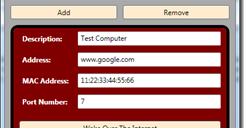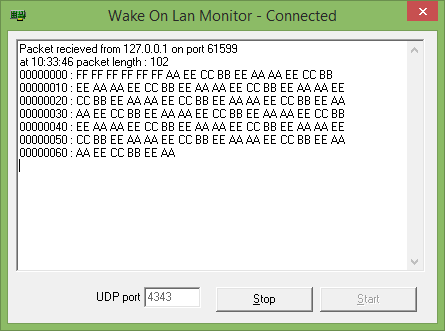
- #WOL WAKE ON DIRECTED PACKET WAKE ON MAGIC PACKET INSTALL#
- #WOL WAKE ON DIRECTED PACKET WAKE ON MAGIC PACKET PC#
- #WOL WAKE ON DIRECTED PACKET WAKE ON MAGIC PACKET MAC#
It is then necessary to configure them accordingly. These include the network card, the BIOS, the operating system and the computer itself. To make Wake-on-LAN technology work, various components must be WoL-compatible. Thanks to so-called magic packets, it is still possible to start the computer. What is special about this is that these remote devices can be in sleep mode or switched off. With this standard it is possible to address computers via certain network data packets. Wake-on-LAN, also known as WoL, describes a standardized procedure from the 1990s. In this case it is useful to shutdown Wake-on-LAN to prevent the network command from being received via Magic Packets. Good to know: Although Wake-on-LAN offers a high degree of flexibility and convenience, starting the computer remotely is not always desirable. Additional software, on the other hand, is not necessary. The basis for this is the BIOS or a specific firmware for the network card.
However, the Ethernet or wireless card must also support the functionality. This component has already been installed in most end devices for over 10 years. An ATX-compatible power supply ensures that the function works. Whether it is possible to use Wake-on-LAN depends on the motherboard and the network card.
#WOL WAKE ON DIRECTED PACKET WAKE ON MAGIC PACKET PC#
For private use, on the other hand, data can be transferred to mobile devices while the PC remains at home. This makes file transfer within the company much easier. Programs such as TeamViewer or VNC are just as accessible as game server or file server programs. After all, the computer is in energy-saving mode during this time. At the same time, companies benefit from a high degree of cost-effectiveness. Since this standard enables remote access, everyday tasks can be performed without further ado: Accessing data and programs as well as running applications works smoothly. What makes it special is that the WoL does not require a LAN connection. It is an industry standard protocol from the 1990s.
#WOL WAKE ON DIRECTED PACKET WAKE ON MAGIC PACKET MAC#
The third argument is the MAC Address of the system and finally the fourth and final argument is the ESXi VMkernel interface to send the packet out of.Wake-on-LAN (WoL) is a way to remotely reactivate a computer from a low-power mode. The second argument is a value of 9, which is probably related to the magic packet as you can see the same value from the wakeonlan utility abvoce. The first argument is the network broadcast address, so if you have a network of 192.168.30.0/24, then the address would be 192.168.30.255. This uses the not supported vsish CLI to send WoL packet.
#WOL WAKE ON DIRECTED PACKET WAKE ON MAGIC PACKET INSTALL#
I recently came to learn that ESXi itself has the ability to send a WoL packet from the ESXi Shell! This could be handy without having to install WoL client, especially if you have access to an ESXi host. The syntax is super easy, you just provide the MAC Address of your system:


I personally have been using the wakeonlan utility on my macOS system for several years now. The ability to power on a system over the network using Wake-on-Lan (WoL) can be extremely useful, especially if you are not physically near the system or after a power outage.


 0 kommentar(er)
0 kommentar(er)
